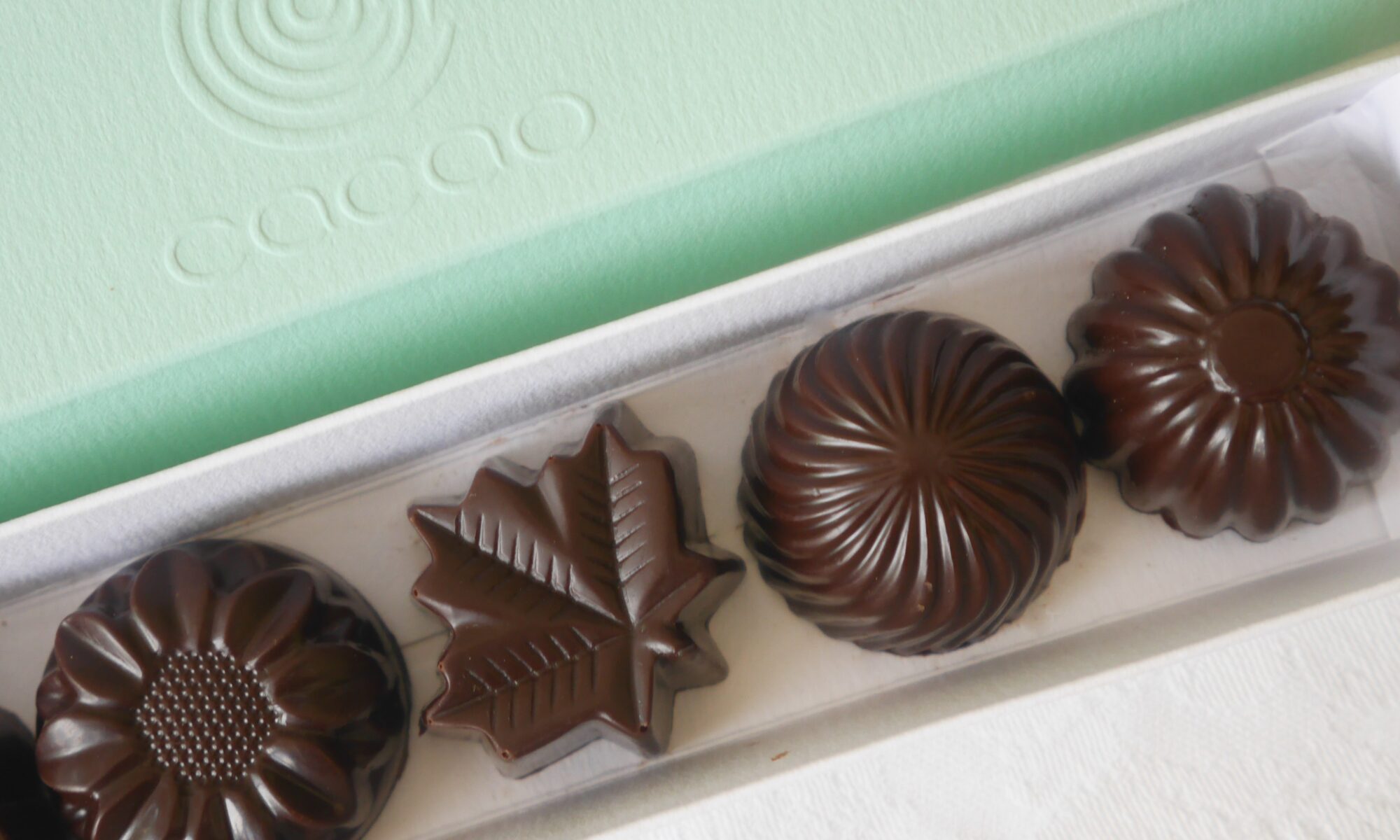Sourcing Deforestation-Free Cocoa
Around 70% of the cocoa used in the mainstream chocolate industry is grown in the West African nations of Cote d’Ivoire and Ghana, where 65-90% of the rainforest has been destroyed to make way for sun-grown cocoa plantations. Shockingly, around 40% of the cocoa in Cote d’Ivoire is grown illegally inside protected areas.
At Cacao, we strive to avoid deforestation in our supply chain by sourcing our cocoa from the Philippines. Specifically, our cocoa is grown in Paquibato, which according to the Filippino Forestry Commission is an area of low deforestation. Additionally, the cocoa company we buy from, Auro, is committed to sustainable, low-impact farming, growing cocoa alongside other food crops like bananas instead of in an open monoculture, as in West Africa.
Supporting Reforestation in Indonesia

It’s not enough for us to just avoid deforestation in our supply chain. We also help to restore rainforests through our use of Arenga palm sugar.
Arenga palm sugar is made from the sap of the Arenga palm tree, which can not only grow on deforested land, but will only grow well if planted alongside a wide variety of other plant species. Making use of this, the conservation NGO, Masarang, has used Arenga palms to restore rainforests across Indonesia, financed in part by profits from palm sugar. Therefore, by buying Masarang’s sugar, we are also aiding its conservation work.
Going Plastic Free


With so much plastic packaging everywhere, we aim to be a plastic-free business.
Therefore, most of our chocolate boxes are made from fold-together cardboard, sourced from forests certified as sustainably managed by the Forestry Stewardship Council (FSC). Meanwhile, our gold lacquer boxes are completely reusable and if returned to us in perfect condition, can earn buyers $70 off their next purchase. Even the bags we sell our products in aren’t actually plastic, but are instead made of a plant-based cellophane that can degrade in a home composter within 12 weeks, unlike most ‘biodegradable plastics’ like PLA, which require an industrial composter to degrade properly, which Hong Kong does not have.
When shopping for ingredients, we use reusable cloth bags and reusable plastic containers instead of single-use plastic ones. If we do find ourselves having to use single-use plastics, we wash them out afterwards so we can use them again.
Reducing Emissions
Like any other business, we produce our share of carbon emissions from electricity and air shipping our ingredients from the Philippines and Indonesia. While we can’t completely eliminate the carbon emissions of our business, we have taken several steps to reduce them.
Buying Masarang sugar is one of these, as the sap from the Arenga palm trees is processed using waste heat from a geothermal energy plant, avoiding emissions from burning fossil fuels or firewood. Restoring rainforests also increases the amount of carbon being absorbed from the atmosphere. Closer to home, all our deliveries of chocolate are made using public transport or an electric car, which we aim to eventually have powered partially by solar energy generated by panels we intend to install, to reduce our share of transport emissions.
What we hope to improve on
Currently, we do still import our ingredients by air instead of by sea, as we simply don’t use enough cocoa or palm sugar to meet the minimum quantities for cheap shipping. Additionally, cocoa needs to be kept cool, which is harder to do in sea containers than on a plane. We have tried to find economically viable means of shipping that don’t involve air travel, but have not found anything yet. However, we are also looking into having the bulk of our cocoa delivered during the winter when it is less hot, making storage temperature less of an issue for importing by sea.
We also use air conditioning and other electrical appliances with power from the main grid. However, we aim to reduce Cacao’s dependence on fossil fuel generated electricity by installing solar panels, using the profits from our business.
Additionally, cellophane, while an eco-friendlier choice for packaging than plastic, does have its own environmental drawbacks. Being plant-based, it does require the use of trees to produce and when disposed of, it may release some carbon dioxide and methane.

